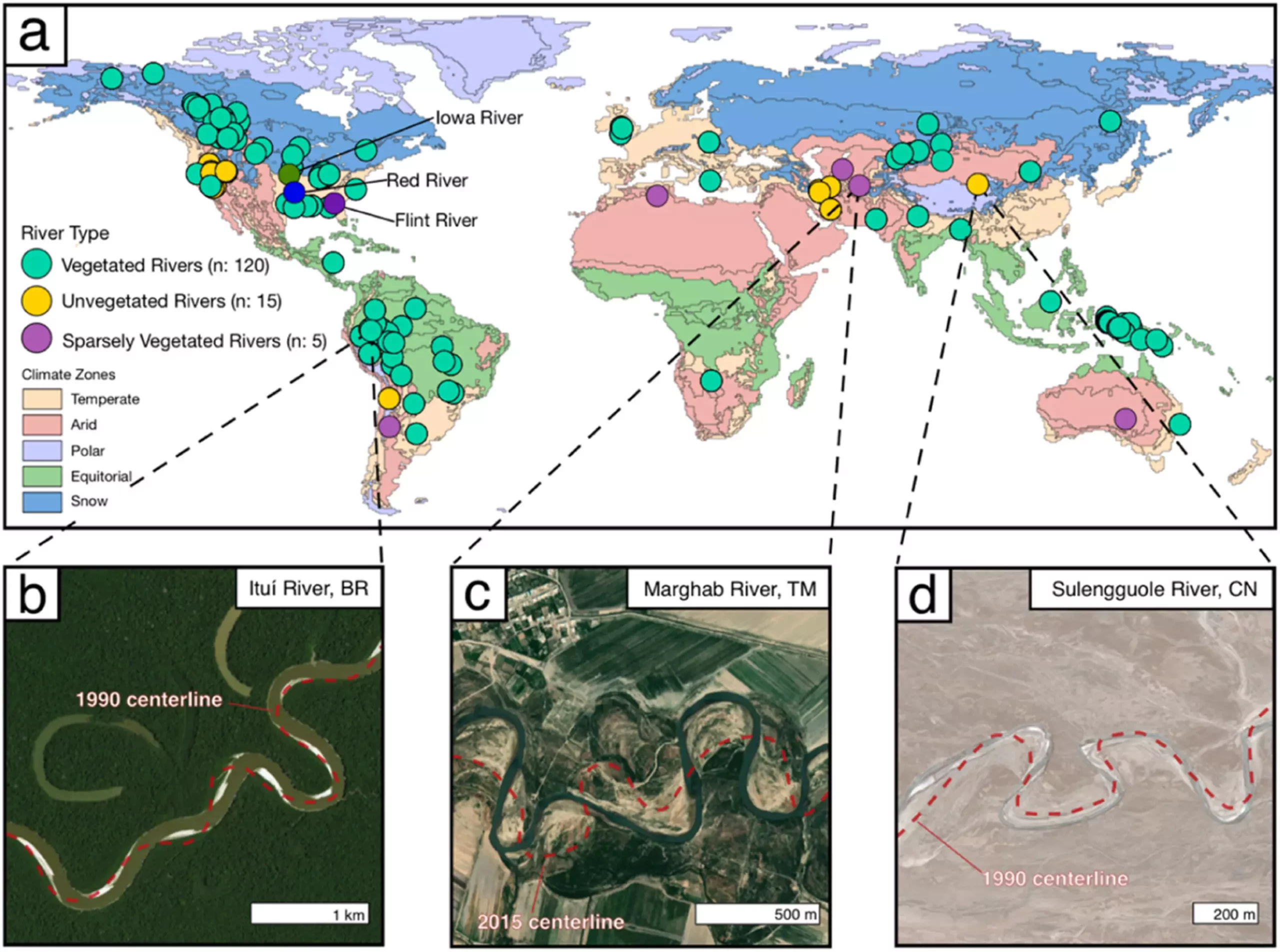Rivers are dynamic natural features that shape the landscape through their movement. A recent study conducted by researchers at UC Santa Barbara delves into the factors that drive the migration rates of meandering rivers. Lead author Evan Greenberg and senior author Vamsi Ganti compiled a global dataset of meandering rivers to analyze how vegetation and sediment load influence channel movement. Contrary to previous studies, their research highlights the interaction between sediment deposition and bank stabilization by vegetation in determining river behavior.
In a meandering river bend, two opposing forces, known as bar push and bank pull, influence the river’s path. Bar push occurs when sediment deposition on the inner side of a bend forms a sandbar that pushes the curve outward. Concurrently, erosion on the opposite bank pulls the bend farther outward. The study found that sediment load has a greater impact on bar push, while the presence of vegetation plays a crucial role in bank pull. Balancing these forces is essential for the stability of meandering rivers.
Data Analysis and Findings
Greenberg and Ganti analyzed measurements of river migration rates from 139 meandering rivers worldwide, incorporating data from various regions, climates, sizes, and vegetation types. By modeling river channels as line segments using satellite imagery, they tracked the movement of these segments over time to measure migration. Their findings indicated that rivers with higher sediment loads migrated faster relative to their size, emphasizing the significance of sediment in driving meander migration.
Dams provide a unique case study for understanding the influences of sediment load and vegetation on meandering rivers. By examining rivers above and below dams, the researchers observed a decrease in migration rates downstream where sediment supply was limited. This demonstrated that sediment load significantly affects bend migration. Understanding the impact of dams on river dynamics is crucial for managing the risks associated with bank migration along floodplains where millions of people reside.
Future Implications and Research
As climate change and human activities continue to alter river systems, predicting the behavior of meandering rivers becomes increasingly challenging. The study’s results suggest a future with more active and less predictable rivers, especially in the context of changing weather patterns and land use. Ganti plans to expand their research to encompass a broader range of river types beyond meandering rivers, aiming to develop a comprehensive model that can describe river migration along its entire length, from the source to the sea.
The study sheds light on the complex interplay of sediment load and vegetation in influencing the migration rates of meandering rivers. By unraveling the forces at play and their implications for river behavior, researchers aim to enhance our understanding of these critical natural systems and better manage them in a rapidly changing environment.


Leave a Reply